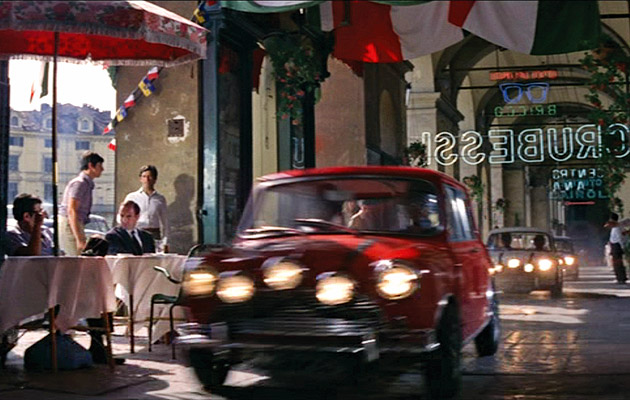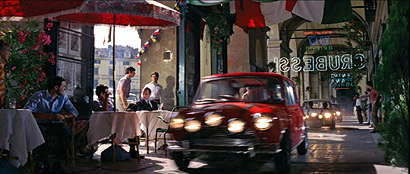|
The Italian Job (Peter Collinson, 1969) |
||
|
What does the role of cars in film tell us about the grip the automobile has on our imagination? Debika Ray sifts through the film clips In Drive, an illustrated account of the “mythology” of driving in cinema, Iain Borden is less concerned with the vehicles themselves than with the act of the driving; the architecture, landscapes, rules and signs we encounter while doing it; and the thoughts, actions and experiences of drivers. Borden, a professor of architecture at UCL, has written a book about the sociology of skateboarding that suggested that we think about architecture as more than buildings – as movement, flow, interactions and the spaces between objects. He returns to these themes in Drive and looks at the lived experience of architecture after construction – this time through motion pictures rather than stills. The main chapters deal with four different types, terrains and speeds of travel – cities, journeys, motorways and “altered states” – and examines their portrayals in films ranging from Antonioni’s The Passenger (1975) to Ridley Scott’s Thelma & Louise (1991). Borden seeks to explain the enduring appeal of driving by exploring the psychological states and themes depicted in driving movies: from adventure, freedom, control and a reconfiguration of social norms to crashes, chases, nihilism and transgression. He examines how our surroundings and social relations have been reshaped by the car – the creation of freeways and their associated architecture and the emergence of the suburbs, the weekend and the family holiday. Borden dwells, in particular, on the kinaesthetics of driving – how the perception of one’s surroundings is transformed at speed and through a windscreen; how the landscape can be reduced to a series of signs, rules and instructions; and how vehicles add a mesmerising layer to the urban symphony. The superficial, abstracted view of architecture and objects, seen in Dziga Vertov’s Man with a Movie Camera, is in a way purer than true engagement, he argues – relying less on the mind than the eye. He doesn’t shy away from darker side of driving culture portrayed in Martin Scorsese’s Taxi Driver, Stephen Spielberg’s Duel and David Cronenberg’s Crash. Urban frustration, alienation, the supremacy of rules, voyeuristic fascination with crashes and the transgressive urges behind games like Grand Theft Auto are explored at length. Borden mentions Lefebvre, but doesn’t linger much on his academic influences. The text is more accessible for it, but he falls victim to his own enthusiasm for the subject – the prose is often more descriptive than analytical, as the author reels off lists of car-related incidents in movies. At times it’s difficult to tell whether Borden is more interested in driving itself or in its use as a cinematic tool. The lack of geographic or temporal focus is striking. Borden watched 450 movies for this book, but very few films from outside the US and Europe. The global rise in car ownership is led by rapidly developing countries like China and India – where driving is rarely a pleasure – so the story of the car is incomplete without more examples. The image of cars as symbols of democracy and social mobility is unconvincing in such contexts, where they are synonymous with exclusion, and where it is often the mechanical, predictable train that liberates the masses. The book’s focus on films from the 1960s and 70s makes it hard to get a sense of changing perceptions through time. This could be considered a failing of the thematic, rather than chronological, arrangement of the book – the divisions between chapters can feel forced at times. Perhaps this is because Borden wants, above all, to explore the personal experience of driving (and his own film preferences) rather than its political implications or relationship with the wider world. But the effects of driving – pollution, accidents, traffic – are unavoidably social, and such an isolationist approach seems inadequate in understanding its grip on the modern psyche. What emerges from Borden’s account is not a straightforward picture of driving as pleasure, but of humanity simultaneously enthralled and trapped by the car and the world we have created for it – both real and imaginary. While Drive is a robust account of the history of driving in 20th-century cinema, it provides few answers about where our relationship with the car is heading.
Drive: Journeys through Cities, Films and Landscapes by Iain Borden, Reaktion Books, £18.00 |
Words Debika Ray |
|
|
||


















